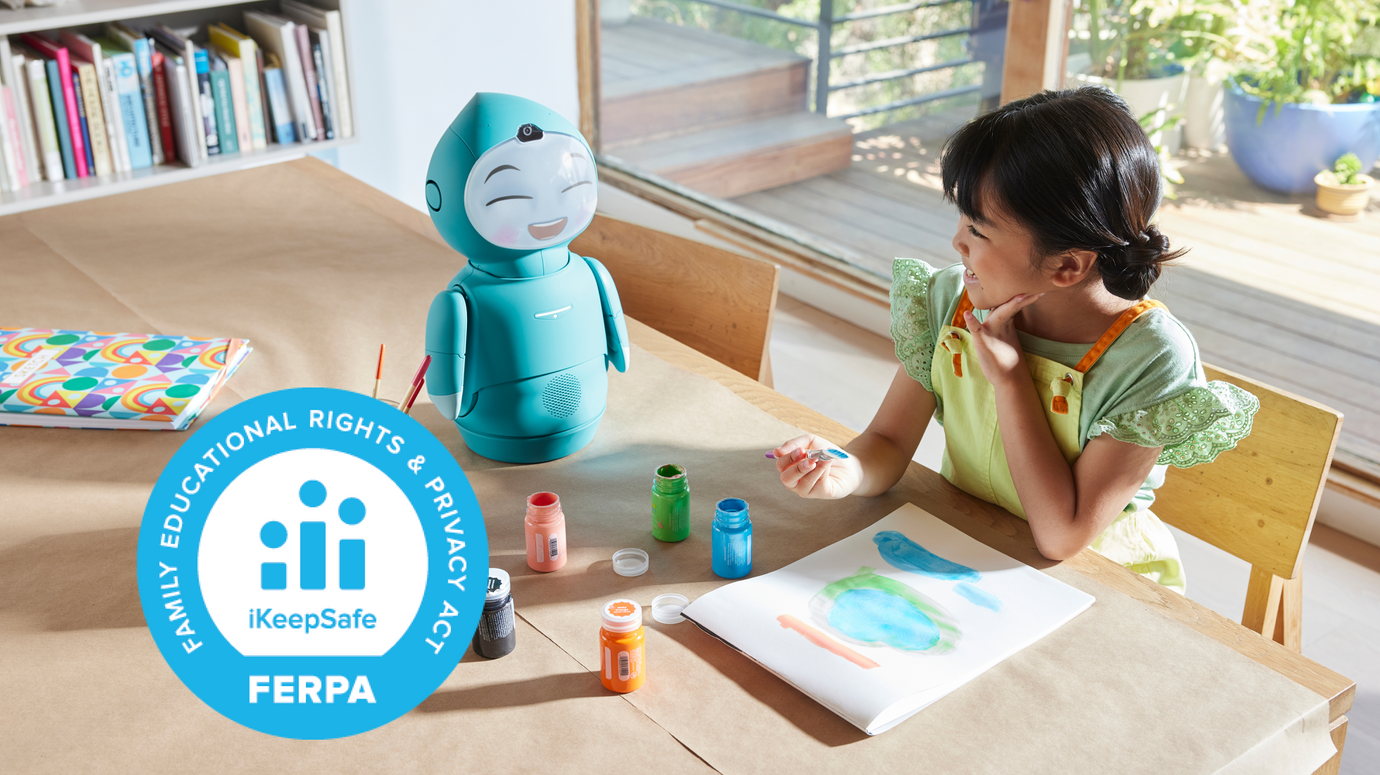Exploring Teletherapy for Kids: What You Need to Know

According to the American Academy of Pediatrics, young people are experiencing “soaring rates of depression, anxiety, trauma, [and] loneliness.” In fact, the U.S. Preventive Service Task Force recently recommended that all kids age 8 and older get screened for anxiety at routine check-ups with their pediatrician. As loving, responsible caregivers, we take our kids to the pediatrician for colds, flus, and all sorts of physical ailments. And yet, the majority of kids who experience a mental health challenge, such as anxiety, don’t get treatment. There are likely multiple reasons for why this is, but access is certainly an important one: Nearly 60% of U.S. counties don’t have a psychiatrist. In other words, there’s an incredible shortage of mental health practitioners – especially ones specialized in working with kids. How can we help kids find the mental health support they need?
Just as many things found a way to be adapted and reinvented to take place online during COVID times, so too has therapy. Teletherapy – or therapy conducted through digital platforms – actually has been around for a while. But the number of people turning to teletherapy for help took off exponentially during the pandemic. And there’s good reason to think that it might stick around and permanently change the way we look at therapy – for adults and kids alike.
How does teletherapy work?
There are several ways that teletherapy can take place.
Live video. The most common form of teletherapy involves using a secure video platform through which the patient and the therapist interact in real time through video chat.
Mobile health. The term mobile health refers to the digital tools (aka apps) that provide some kind of mental health or well-being assistance. Think apps that help with meditation, breathing, sleep tracking, or mindfulness. Mobile Health could also mean private platforms that help patients communicate with their practitioner.
Telephone. With video conferencing easily accessible to many, the telephone is not used as much – but it remains an option for some.
Asynchronous communication. A platform where patients and practitioners can communicate with each other when convenient through messages and recorded videos.
Prescriptions. In some cases, practitioners can provide prescriptions for medications through a digital platform.
Advantages to teletherapy
There are many advantages to teletherapy.
Comfort. When therapy happens online, kids get to stay in the comfort of their own home. This can be a plus for kids who may feel intimidated or shy in unfamiliar places such as a practitioner’s office.
Convenience. No need to deal with traffic, leaving the house, or even making sure your kid has pants on (more on that later). For busy families, this can be invaluable.
Comfort with technology. Kids generally have high levels of comfort with technology. For some kids, talking to a therapist through a screen may actually be easier or less intimidating than sitting in the room together and talking face to face. What’s more, for kids of this digital native generation - aka kids born into our pervasive use of screens - technology is just an integral, normal part of life. The more kids are comfortable with screens, the better the chances that they won’t blink an eye at the thought of receiving therapy through a screen. In fact, according to a recent report published by the non-profit Child Mind Institute, “The patient’s comfort with videoconferencing is critical to the success of telepsychiatry…Younger patients and those with higher levels of education have had greater exposure to these technologies and are therefore likely to display greater comfort with telepsychiatry” (Children’s Mental Health Report, 2020).
Access. With the shortage of practitioners, teletherapy opens up access to many more options for matching kids who need help with professionals who can provide the help. That ease of access can also speed up service as there’s less need to wait to find someone who is both close by and available. If you’re planning on paying for the therapy with health insurance, there may be some issues with coverage depending on what state you live in. Particularly during COVID, many insurance companies adjusted policies regarding coverage of teletherapy, but it’s good practice to look into your particular coverage plan before arranging for teletherapy.
Direct help during specific critical points. Sometimes, having the therapy session at home can give the therapist the opportunity to gain insight into exactly what the kid’s environment is like. Similarly, if there’s a time of day or routine that is a particular pain point, such as mealtimes, there’s the possibility for a therapist to present during that time. Quoting again from the Child Mind Institute’s 2020 Children’s Mental Health Report: “For mental health providers, being able to catch a glimpse of the patient’s home environment can be illuminating and provide authentic context in a ways that a clinical office setting cannot.”
Reduce stigma. For some communities, therapy still has a stigma attached to it. But seeing a therapist from the privacy and comfort of your own home can help keep therapy a private choice for your family. When they don’t have to physically go out for a therapy session, families may feel less need to advertise their therapy journey, and therefore can be more empowered to seek out help.
Effectiveness. According to the National Center for Health Research, studies with adults have found that teletherapy can effectively treat issues such as anxiety or depression. What’s more, adult patients report equal levels of satisfaction with teletherapy and in-person therapy.
The findings are similar for kids receiving teletherapy. Adult caregivers of kid patients report high levels of satisfaction with their kids’ teletherapy experiences. Specifically, according to the 2020 Children’s Mental Health Report quoted previously, parents who have used telehealth services for children report strongly positive responses: “85% said their child had benefited, 84% said it had been a positive experience for their child, 78% said they had seen significant improvement in their child, and 87% said they would recommend it to others.” In addition to caregiver satisfaction, the therapy seems to be effective as well. In general, there’s a variety of research suggesting that teletherapy can be effective for treating autism spectrum disorder, anxiety, attention deficit hyperactivity disorder, behavior problems, depression, developmental disorders, and more.
Possible challenges and how to overcome them.
Though teletherapy has potential to do great things for mental health, there are also possible challenges.
Though some kids may feel somewhat intimidated or shy in a practitioner’s office, others might actually appreciate the promise of privacy an office provides. Therapy can be very personal and it may be hard to find a space in your home that’s appropriately private where kids can speak and interact freely without fear of being overheard or interrupted.
To get around this issue, caregivers can help set boundaries around the session. If kids need privacy, help make sure that they have a private, quiet area where they can have their session without interference or interruptions. Explain the importance of this special space to other members of the family too so that they will also respect the time and space you’ve set aside.
Another challenge can be difficulty in respecting the integrity of the therapy session. That is, when starting the therapy session means just moving into the other room and turning on the computer, it may also be harder for kids or their families to stay disciplined and to respect the therapy time as precious.
To get around this, remind yourself and your kid that teletherapy is just as important and meaningful as therapy in a practitioner's office – and should be treated with just as much respect. Show your kid how that time should be respected by having the same (or similar) rules apply. For example, if there’s a no eating policy for office visits, your kid shouldn’t be chowing down on snacks for the teletherapy session either. Or, if attending teletherapy in pajamas turns out to be distracting, insist that they do actually get dressed for their session.
Other things you can do include removing distractions such as toys, screens, or other high-interest items that aren’t relevant for therapy. You can also create a small ritual to do before and after the session to help signify that something different is happening, even if you’re not leaving the house. For example, sing a calming song, sit and take 10 deep breaths, or do a 2-minute meditation or visualization with your kid before starting the session to help set the mood.
What else can parents do?
There are a few other ways caregivers can help head off potential challenges and increase the likelihood of making teletherapy a good experience for all.
First, caregivers can help make sure that the technology is set and functional before the therapy begins. Download and sign in to the video conferencing platform, test out the camera and microphone to see that they’re working and correctly activated, and check the internet connection. Also, make sure that the device is set up so that your kid can be comfortable but is also able to move around if necessary, and still stay within the range of the camera.
And perhaps most important: caregivers can be active participants in the therapy plan. The “just right” level of involvement will look different for different kids. For example, younger kids may need their caregivers to be present in the therapy session, helping them stay focused or assisting with technology issues. Older kids may be more likely to need privacy during their sessions with the therapist, but might need help making sure they understand and complete the assignments or tasks the therapist suggests. The best way to see how you can support your kid is to be in contact with the therapist for their advice and guidance.
Teletherapy May Be The “Just Right” Solution
In the face of a severe shortage of mental health practitioners, there’s good news: Teletherapy is available and easy. Not only that, but it can be an effective means of treating a variety of mental health challenges for both adults and kids. Caregivers also see the benefits. In fact, almost nine out of ten parents recommend telehealth for kids with “mental health or learning challenges” (Children’s Mental Health Report, 2020). As we become more and more aware of just how common mental health challenges are for kids, teletherapy may very well be a solution for helping more of those kids get the support they need.







